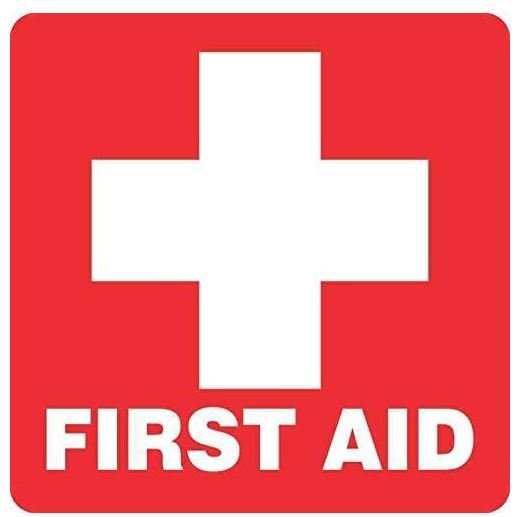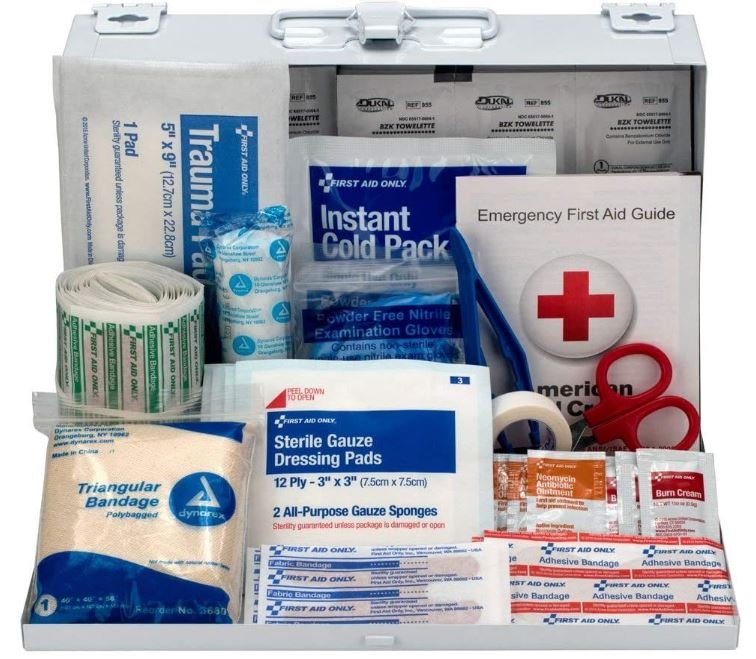Woodworking Guide to Safety and First Aid
Any discussion among woodworkers inevitably turns to injuries and battle scars, what went wrong, and how it could have been avoided.
The lessons are so often the same: bad things happen when we rush, when we remove the safety features provided with power tools, and when we don’t concentrate on the task at hand.
Ultimately, what keeps us safe is our healthy fear of spinning blades and knives.
But just as important is regularly monitoring our shop hazards and being prepared for minor injuries or worse.
The same attention we put into cutting a perfect dovetail, we need to put into maintaining a safe shop environment to ensure we are able to continue to do what we love.
BE PREPARED
How do we prepare for bad things to happen?
By imagining the variety of ways things can go wrong and developing a strategy to either prevent it and address it if it happens.
Injuries come in all shapes and sizes.
So let’s start with a number of typical strategies where we can avoid injury or be prepared if one happens.
- Ensure your cell phone is charged, in case you need to call for help.
- Maintain a battery-operated light source in case of power outage to find your way out safely.
- Use push sticks and other safety mechanisms appropriate for the tools when possible to prevent injury.
- Maintain a first aid kit and make it quickly accessible and ready to use.
Know how to use each item. If you buy a first aid kit at the store, read the accompanying directions thoroughly.
Strategize how you will use each item of a first aid kit with one hand, in case of injury to the other.
If you already have a first aid kit, check the first aid kit for expiration. Some treatments or medicines aren’t as effective past a certain date.
You should restock the kit once a year.
- Give first responders the information they may need by keeping any important information about yourself and your family in a handy, easily accessible place.
Include your address, everyone’s date of birth, health card numbers, medical conditions, allergies and prescriptions and dosages, as well as contact information for your doctor(s).
- Review your workshop for unsafe hazards, including:
Extension cords that can be tripped over.
Outlets not in safe condition (ex. Not properly grounded or hanging from the wall).
Wood pieces causing a trip hazard.
Using a drill press without clamping it down appropriately.
Low hanging hazards that can cause a head injury.
Hazardous chemicals not stored properly.
- Review areas where you might be at a greater risk for injury:
Have you removed safety features on table saw or miter saw? If so, can you work with them re-attached or find a way to prevent serious injury?
Are you trying to cut a small piece on a band saw without clamping it to a larger piece?
Are you using the proper technique on the router table to avoid spin off?
- Have a Type A fire extinguisher ready to use.
Review the procedure for using a fire extinguisher so you can use it immediately before a fire spreads.
Fire extinguishers are good for about ten years, but if you’re using an older one, it might be safer to buy a new one.
- Use proper personal protective equipment (PPE):
Safety glasses, hearing protection, face mask.
Is equipment labeled to remind you to use PPE?
If not, make your own labels or reminders!
BODY MECHANICS AND INJURY PREVENTION
In your workshop, the safest option is of course, to avoid injury.
As you are often lifting heaving objects or standing for prolonged periods of time, body mechanics are a huge part of preventing injuries.
Basic, safe body mechanics comes down to 5 fundamentals of movement:
- Lift with your knees.
- Maintain good posture while sitting.
- Stand with your feet apart.
- Properly align your body when lifting or turning.
- Avoid sitting for long hours on end.
- To accomplish these fundamentals, keep these procedures in mind.
When you stand
- Keep your feet flat on the floor about 12 inches (30 cm) apart.
- Do not lock your knees.
- Keep your shoulders down, chest out, and back straight.
- When you lift an object:
- Your feet should be apart, with one foot slightly in front of the other.
- Keep your back straight.
- Bend from your hips and knees, do not bend or twist at the waist
- Lift the object using your arm and leg muscles.
- Hold the object close to your body at your waist level.
- Use the same process if you need to push or pull something heavy.
When you sit:
- Sit with your back straight and place extra support behind your lower back
- Get up and change positions often if you sit for long periods of time.
SUMMARY
You may have shared horror stories with other makers about nasty injuries or cuts, but those only make good stories if you come out healed and well on the other side.
Knowing how to properly treat (and prevent) small and serious injuries ensures that your story is just a cautionary tale and not a life-changing event.
Having a first aid kit and fire extinguisher in your shop is not enough.
You also need to know how to use them or tell someone else how to use them.
You may even need to teach your family members what to do if you are found incapacitated in your shop.
Knowing what to do will prevent panicking, wasting valuable time, or allowing a small injury to spread to a worse injury.
Woodworking can be dangerous, but it doesn’t have to be. Use the safety features on your equipment.
Wear PPE. Practice safe techniques. Know how to respond to injuries in your shop. Seek help when you need it.
Be safe out there!
First Aid Kit
Below is a list of first aid kit contents applicable to common woodworking injuries:
- Adhesive Bandages 1” x 3”
- Antibiotic Ointment
- Antiseptic Towelettes
- Instant Cold Pack
- Gauze Roll
- Gauze Pads
- Fingertip bandages
- Knuckle bandages
- First Aid Tape ½”
- Saline/wound spray (available at local pharmacy stores & Amazon) to wash the wound
- Scissors to cut tape
- Nitrile Exam Gloves
- Triangular Bandage 40”x40”x56”
- 1 hand emergency Tourniquet
- Tweezers
- Zip lock bags


